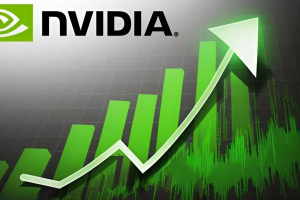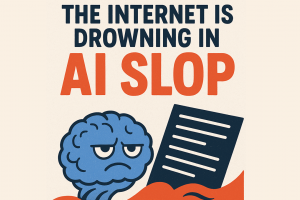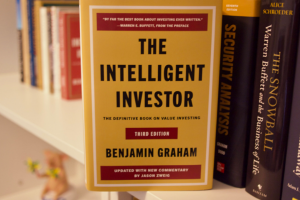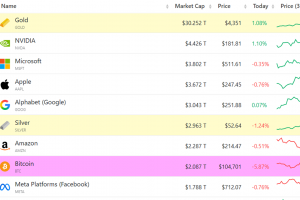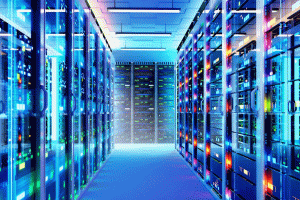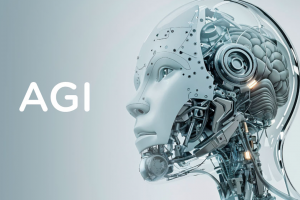Nvidia’s GPUs have become the backbone of AI, enabling breakthroughs in healthcare, self-driving cars, finance, climate science, and creative industries. From accelerating drug discovery to powering ChatGPT, from simulating global weather patterns to building autonomous factories, GPUs are no longer just about pixels — they are about progress. Explores how Nvidia transformed from a gaming-focused company into a trillion-dollar leader of the AI era, why GPUs are uniquely suited to artificial intelligence, and what this means for the future of work, innovation, and humanity itself.
What if I told you that the same chip powering your favorite video games is also building self-driving cars, designing life-saving drugs, generating hyper-realistic art, and even reshaping the global economy?
This isn’t science fiction. It’s happening right now. And at the heart of this transformation lies one company: Nvidia.
We are standing at the dawn of a new industrial revolution—one not driven by steam or electricity, but by artificial intelligence accelerated by GPUs. And Nvidia is not just riding the wave; it’s steering the ship.
🌍 The Industrial Revolutions That Shaped Humanity
To understand the magnitude of what’s unfolding today, let’s rewind history.
-
First Industrial Revolution (18th–19th century): Steam power mechanized industries, transforming agriculture and textiles.
-
Second Industrial Revolution (19th–20th century): Electricity and the assembly line revolutionized mass production.
-
Third Industrial Revolution (20th century): Computers, semiconductors, and the internet connected the world.
Now, the Fourth Industrial Revolution is here. Unlike the revolutions before, it’s not just about physical machines—it’s about intelligent systems, algorithms, and AI-powered automation.
And at the heart of this revolution is a humble piece of silicon: the GPU.
🔑 Why the GPU, Not the CPU, Is Driving AI
For decades, the CPU (Central Processing Unit) was the brain of the computer. But as artificial intelligence grew, traditional CPUs hit a wall. Training AI models requires handling billions—even trillions—of calculations simultaneously. CPUs weren’t built for that.
Enter the GPU (Graphics Processing Unit). Originally designed to render pixels for video games, GPUs excel at parallel processing—running thousands of small computations at once. This exact architecture makes them perfect for AI training and inference.
In other words:
🎮 What started as gaming hardware → 🧠 became the engine of AI.
Nvidia saw this future earlier than anyone else. And that vision transformed it into a trillion-dollar company.
📈 The Numbers That Speak Volumes
Let’s put things into perspective:
-
In 2022, Nvidia reported about $27 billion in revenue.
-
By 2024, that number soared past $60 billion, with AI data center sales dominating.
-
Over 95% of AI training runs on Nvidia GPUs, making them the de facto standard for deep learning.
Nvidia isn’t just a player—it’s the backbone of the AI revolution.
🧬 AI Applications Powered by Nvidia GPUs
So, where exactly are these GPUs making a difference? Everywhere.
1. Healthcare & Drug Discovery
AI running on Nvidia GPUs helped researchers develop COVID-19 vaccines at record speed. Today, pharmaceutical companies use GPUs to simulate protein folding, accelerating the creation of treatments for cancer and rare diseases.
2. Autonomous Vehicles
Tesla, Mercedes, and nearly every major automaker use Nvidia’s DRIVE platform to train self-driving algorithms. These cars learn how to “see” the world, process sensor data, and make split-second driving decisions.
3. Creative Industries
From AI-generated movies to real-time rendering in the Metaverse, Nvidia GPUs fuel tools like Adobe Firefly, Stable Diffusion, and Unreal Engine. Artists and designers are no longer limited by imagination—they now have AI as their creative partner.
4. Finance & Business
Hedge funds and banks use GPU-powered AI to predict stock trends, detect fraud, and run high-frequency trading at unimaginable speeds.
5. Climate & Energy
Nvidia GPUs simulate climate change, help design renewable energy systems, and optimize energy grids—an AI-driven fight against global warming.
💡 Why This Is the “Next Industrial Revolution”
Like steam engines in the 18th century, GPUs today are general-purpose accelerators for innovation. The ripple effects go far beyond technology:
-
Jobs: Just as factories created millions of industrial jobs, AI is creating demand for data scientists, AI engineers, and entirely new professions we haven’t imagined yet.
-
Productivity: McKinsey estimates AI could add $4.4 trillion annually to the global economy.
-
Society: AI-driven breakthroughs in medicine, education, and climate could improve life for billions.
We’re not just talking about better smartphones or faster computers—we’re talking about a fundamental shift in how humanity builds, creates, and solves problems.
🔥 Nvidia’s Strategic Moves
Nvidia didn’t stumble into this role by accident. Here’s how they positioned themselves as the AI leader:
-
CUDA (2006): Nvidia released CUDA, a programming model that let researchers use GPUs for more than graphics. This move made AI research explode.
-
Data Center Focus: Nvidia pivoted from consumer graphics to powering cloud giants like Amazon, Microsoft, and Google.
-
AI Partnerships: Nvidia works with OpenAI, DeepMind, and nearly every major AI lab. GPT-4, Stable Diffusion, and countless other models were trained on Nvidia hardware.
-
Vertical Integration: From hardware (GPUs) to software (CUDA, AI frameworks) to platforms (Omniverse, DRIVE), Nvidia built a full-stack AI ecosystem.
This wasn’t luck—it was visionary execution.
📊 Real-World Proof
-
OpenAI’s ChatGPT was trained on 10,000+ Nvidia GPUs.
-
Google’s DeepMind runs reinforcement learning on Nvidia hardware.
-
Startups in robotics, biotech, and fintech all rely on Nvidia’s ecosystem.
Simply put: If you want to build AI, you need Nvidia.
🌟 The Human Story: From Games to Global Impact
Here’s what makes this story inspiring: Nvidia’s roots are in gaming. The company was founded in 1993 by Jensen Huang, Chris Malachowsky, and Curtis Priem to make graphics chips for gamers.
Fast-forward 30 years: The same company that made your favorite video games look realistic is now helping scientists cure diseases and entrepreneurs launch billion-dollar AI startups.
It’s proof that technology built for fun can end up changing the world.
🚀 The Road Ahead: What’s Next?
We’re just scratching the surface of what’s possible. The next decade will bring:
-
Smaller, cheaper, more powerful GPUs, democratizing AI access.
-
AI + Robotics, where factories, warehouses, and even homes become autonomous.
-
AI-powered creativity, blurring the lines between human imagination and machine generation.
-
AI-driven science, solving problems from climate change to interstellar exploration.
Nvidia won’t be alone—AMD, Intel, and specialized AI chipmakers will compete—but Nvidia’s early lead and ecosystem give it a powerful advantage.
🌱 Inspiration for You
Here’s the takeaway for you, the reader:
We are all participants in this revolution. Whether you’re an entrepreneur, engineer, creative, or dreamer, you now have unprecedented tools to build the future.
Think about it:
-
The last industrial revolution gave us cars, electricity, and mass production.
-
This one is giving us AI companions, personalized medicine, and climate solutions.
What will you build with it?
👉 Now it’s your turn.
-
Do you see AI as a threat or an opportunity?
-
How do you think Nvidia’s role will evolve in the next 5 years?
-
What industries do you believe AI will disrupt the most?
Drop your thoughts in the comments 👇 — let’s spark a conversation about the future we’re building together.
And if you found this inspiring, share it with a friend who loves tech. 🌍✨














